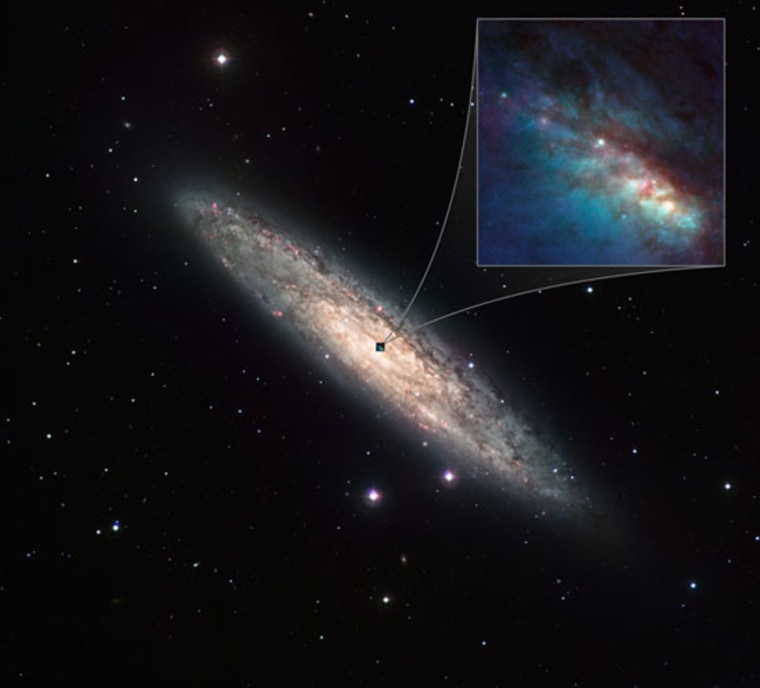A sharp-eyed instrument on the Very Large Telescope has given astronomers a peek at the heart of a nearby galaxy, revealing a host of young, massive and dusty stellar nurseries and a possible twin of our own Milky Way's supermassive black hole.
The galaxy, dubbed NGC 253, is one of the brightest and dustiest spiral galaxies in the sky. It is also known as the Sculptor Galaxy, because it is located in the Sculptor constellation.
The Sculptor Galaxy is a starbust galaxy, so-called because of very intense star formation there.
Astronomers from the Instituto de Astrofísica de Canarias in Spain used NACO, an adaptive optics instrument on the European Southern Observatory's Very Large Telescope (located in Atacama desert in northern Chile), to study NGC 253 in finer detail in the near-infrared.
Adaptive optics corrects for the blurring effect that Earth's atmosphere can have on images taken by ground-based telescopes. Sensors and deformable mirrors correct distortions of incoming light, producing images as clear as if the telescope were in space.
With its adaptive optics system, NACO revealed features of NGC 253 that were only 11 light-years across.
The NACO observations were combined with data from another VLT instrument, VISIR, and images from the Hubble Space Telescope and radio observations made by the Very Large Array and the Very Large Baseline Interferometer. (Because of their longer wavelengths, radio signals aren't affected by atmospheric turbulence.)
"Our observations provide us with so much spatially resolved detail that we can, for the first time, compare them with the finest radio maps for this galaxy — maps that have existed for more than a decade," said team member Juan Antonio Fernández-Ontiveros.
With the images, the astronomers identified 37 distinct bright regions — a threefold increase on previous results — packed into a tiny region at the core of the galaxy that makes up just 1 percent of the galaxy's total size.
"We now think that these are probably very active nurseries that contain many stars bursting from their dusty cocoons," said team member Jose Antonio Acosta-Pulido.
The combined data also led the astronomers to conclude that the center of NGC 253 hosts a scaled-up version of Sagittarius A*, the bright radio source that lies at the core of the Milky Way and is known to harbor a massive black hole.
"We have thus discovered what could be a twin of our galaxy's center," said team member Almudena Prieto.
